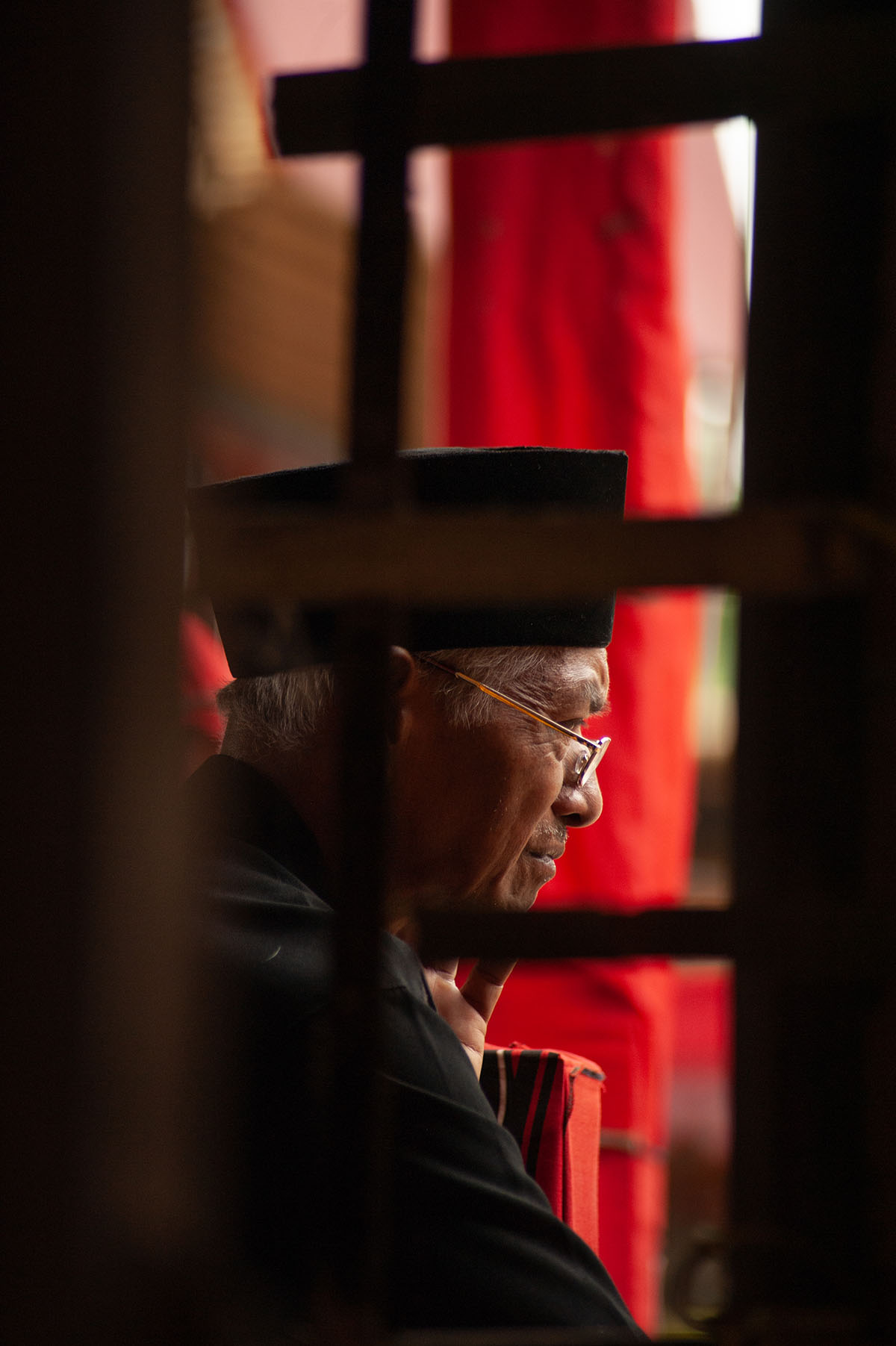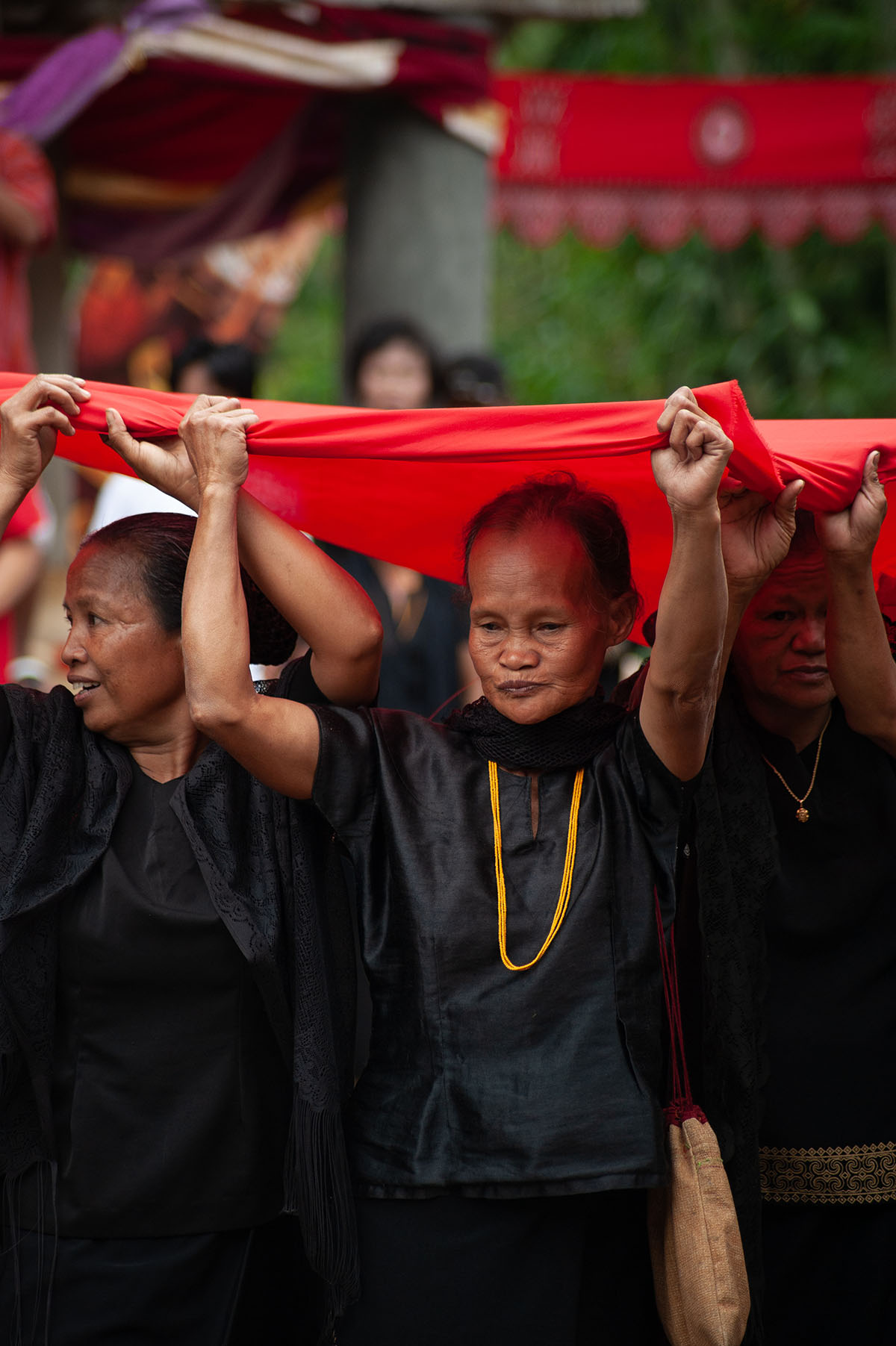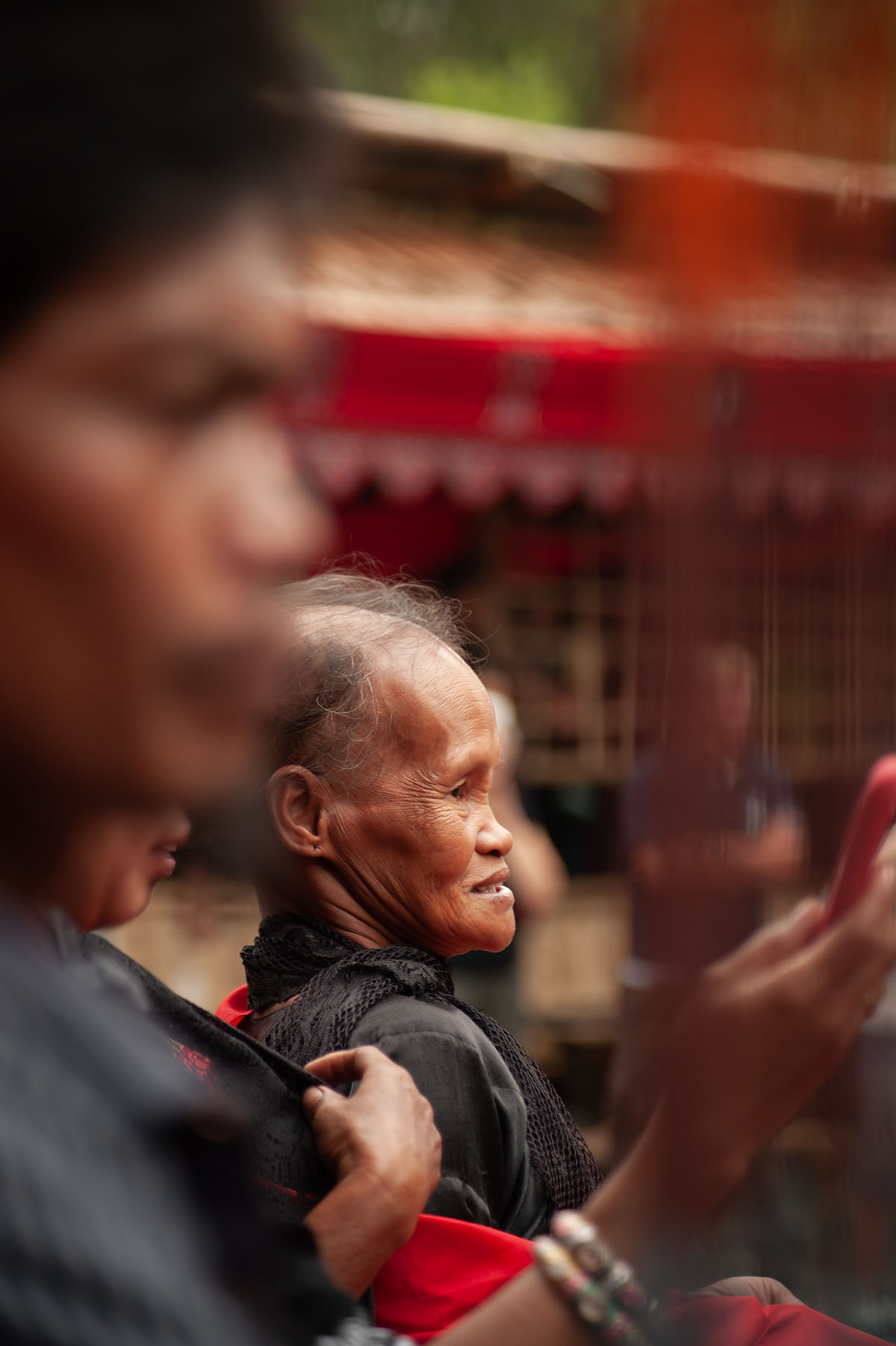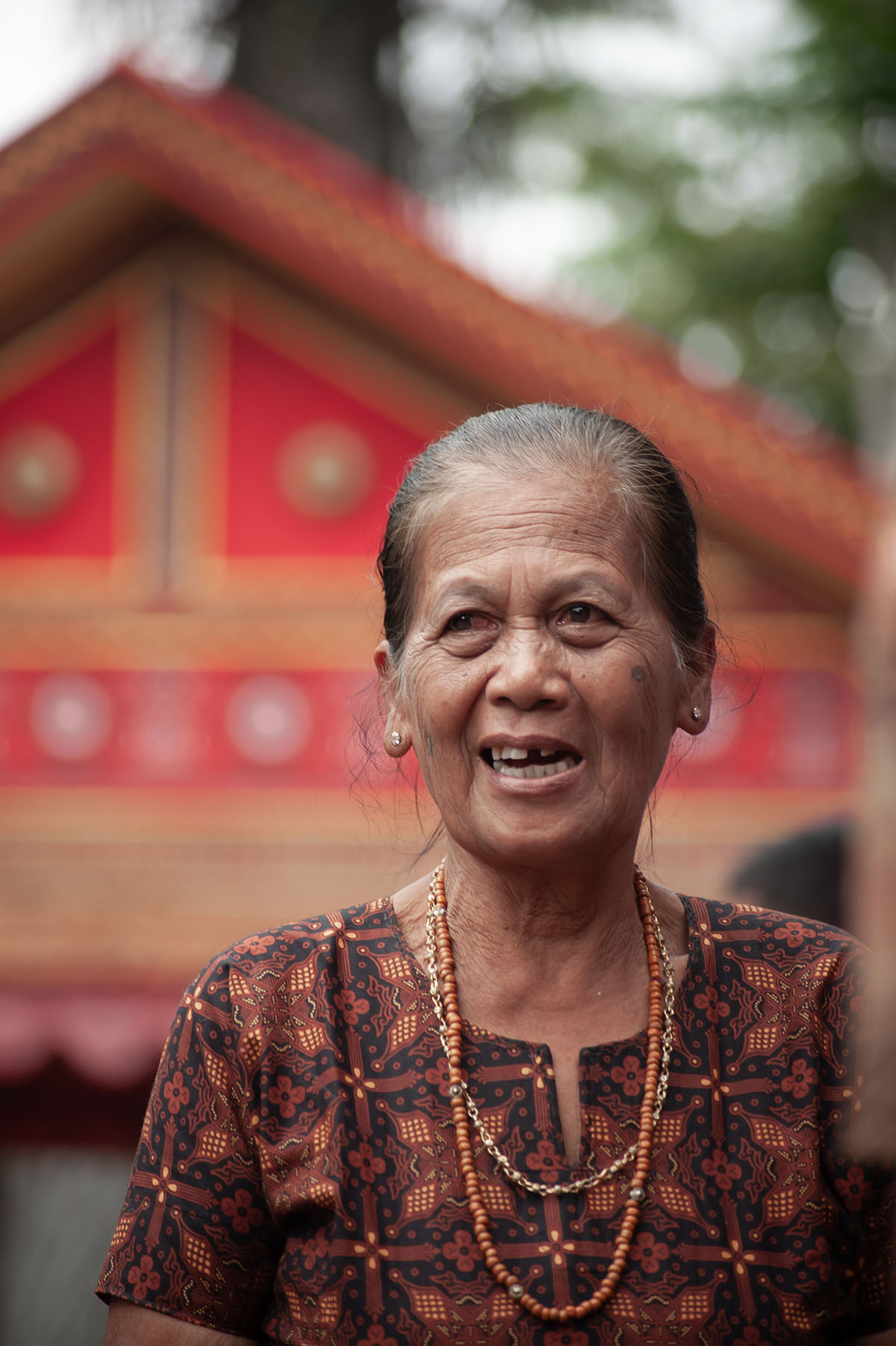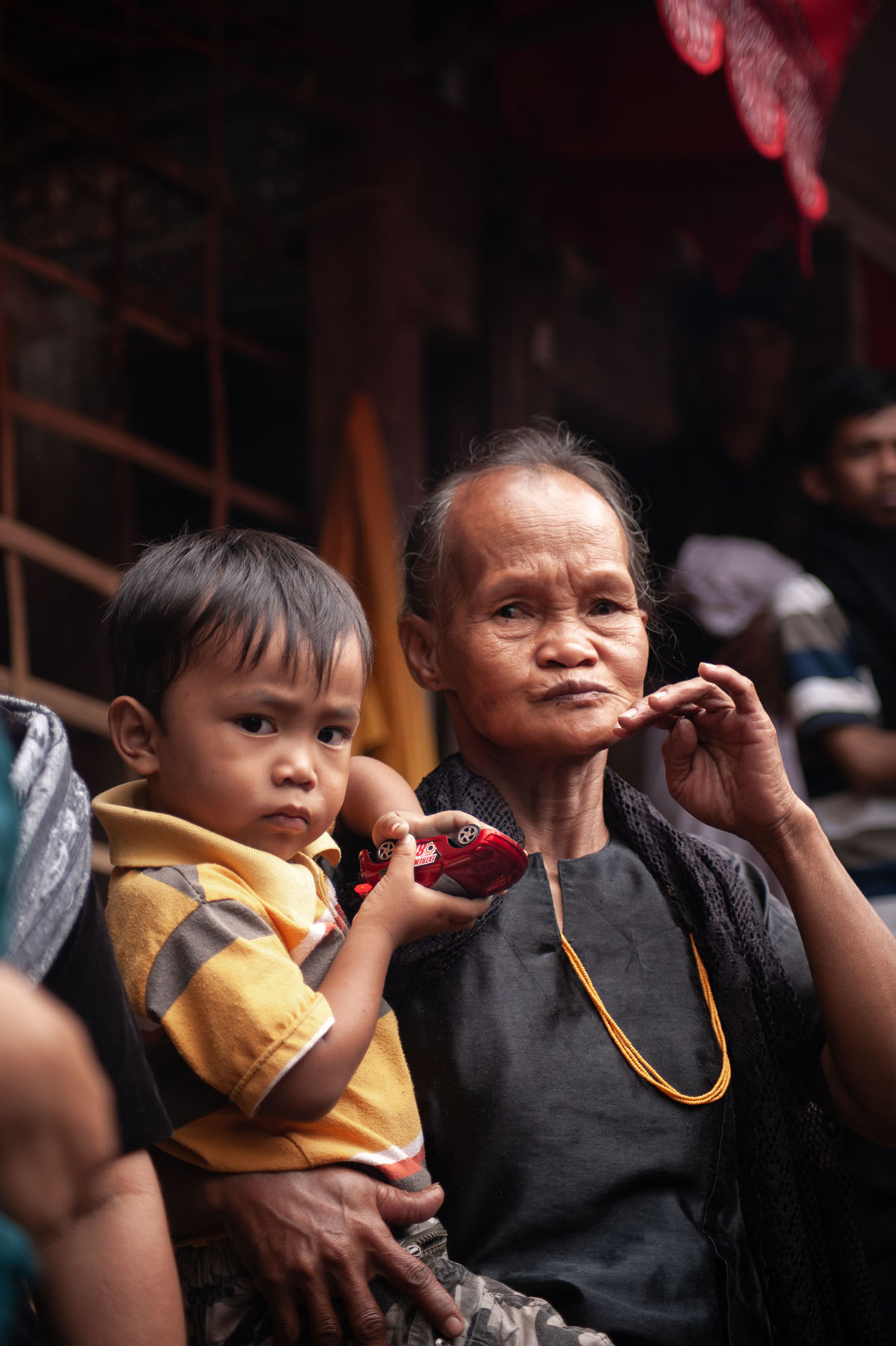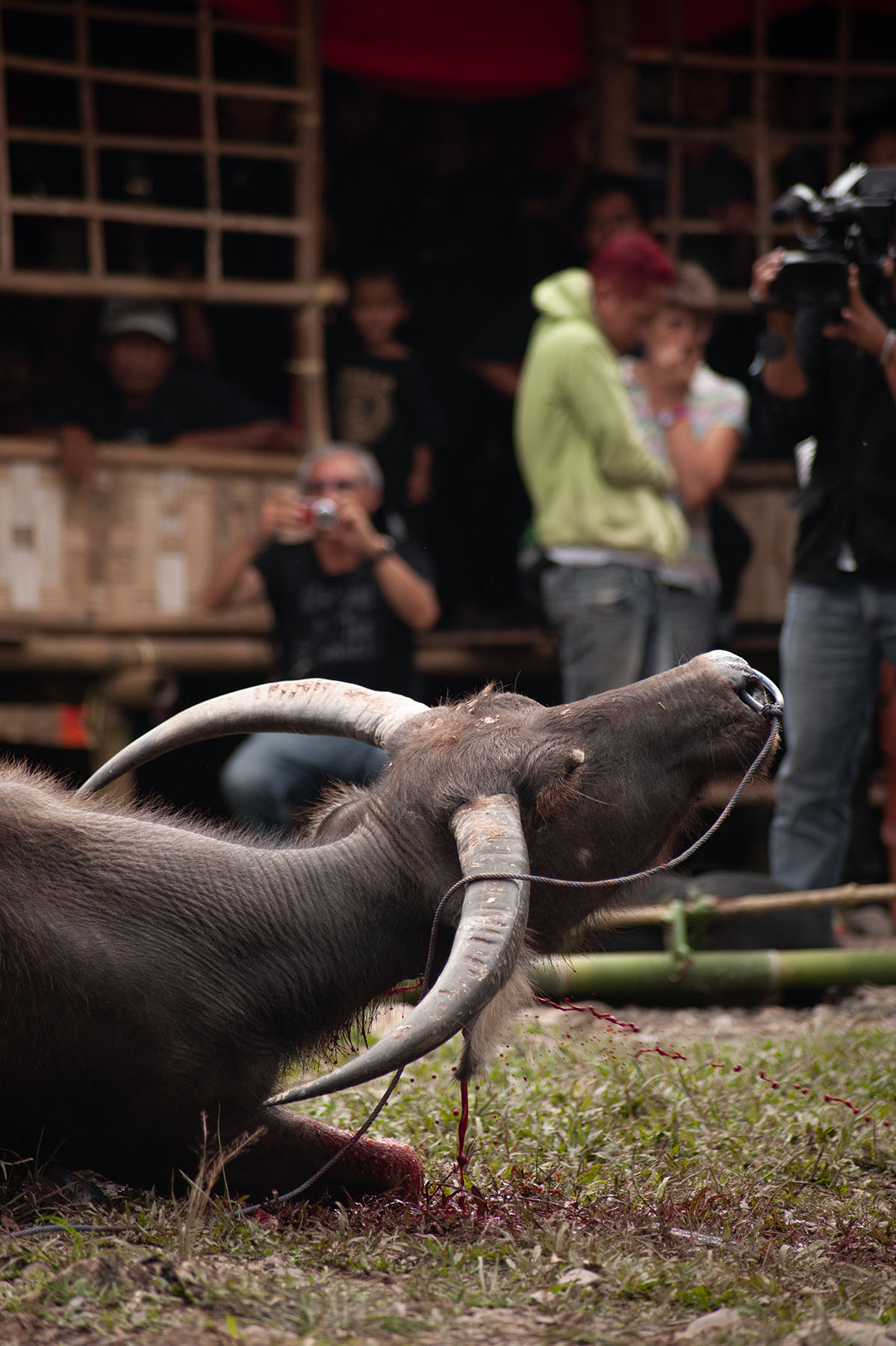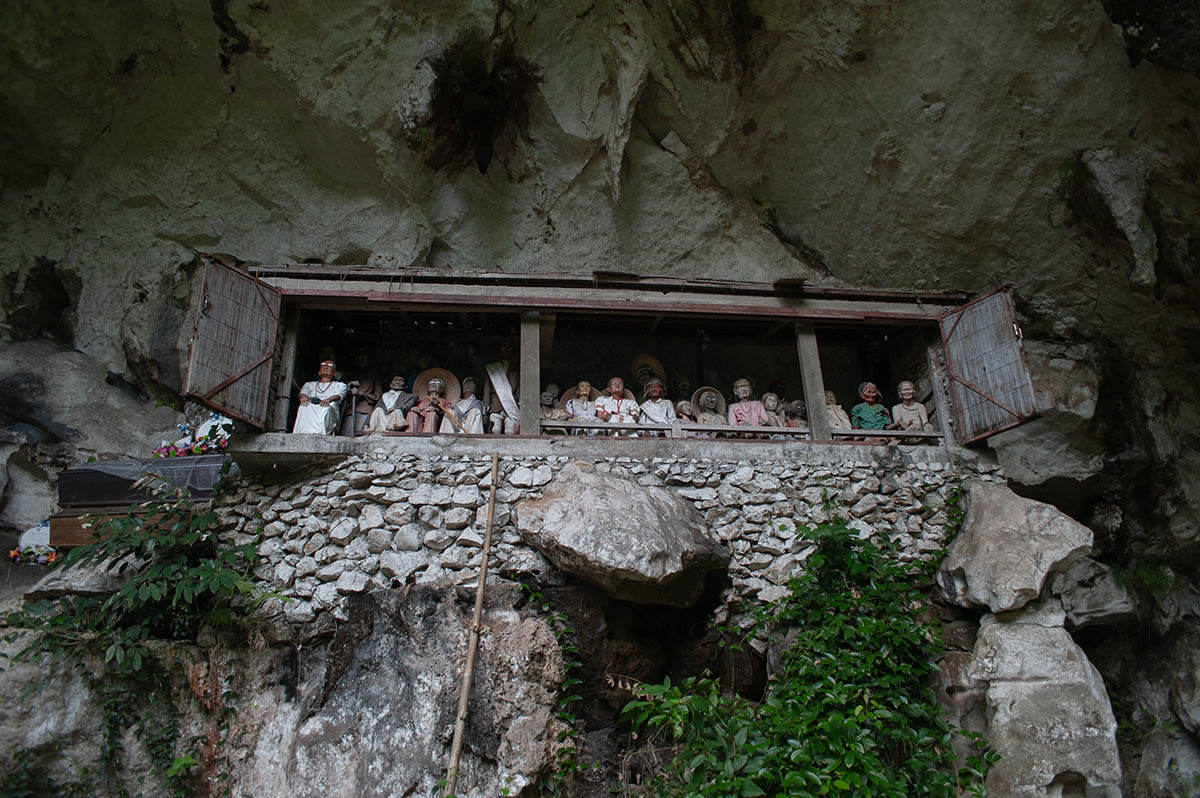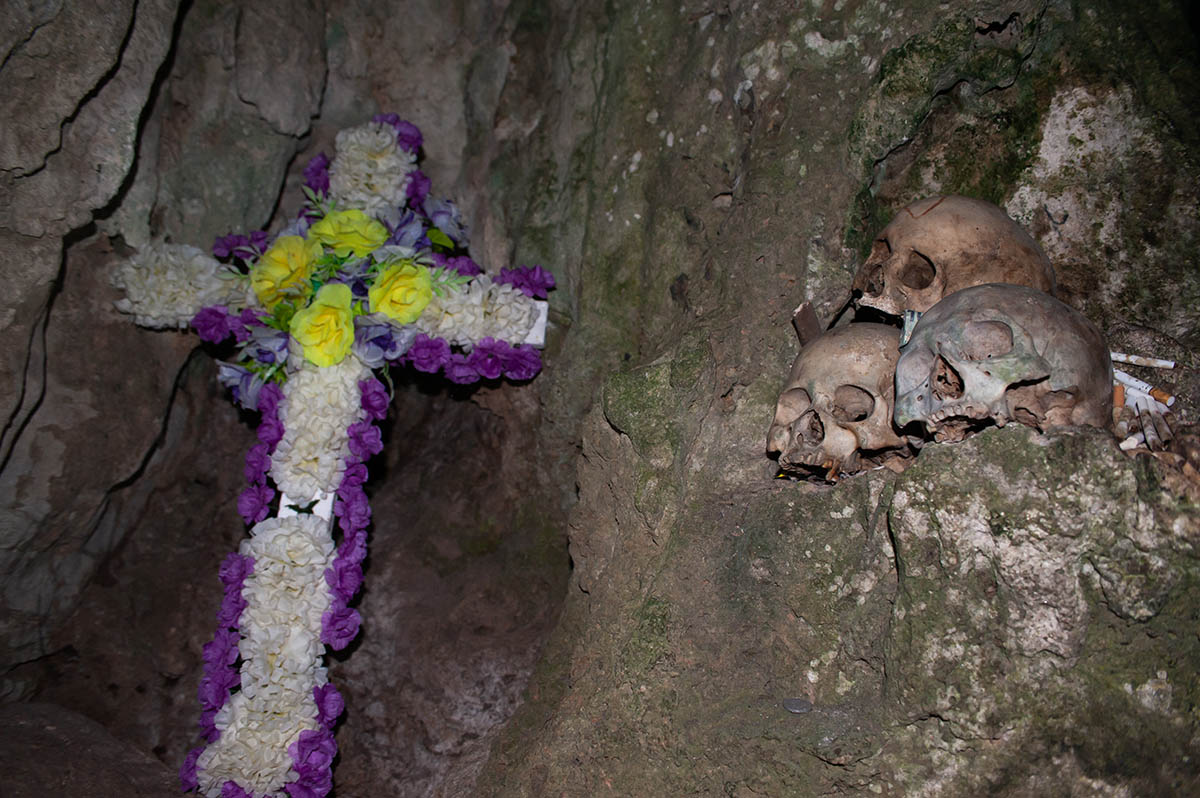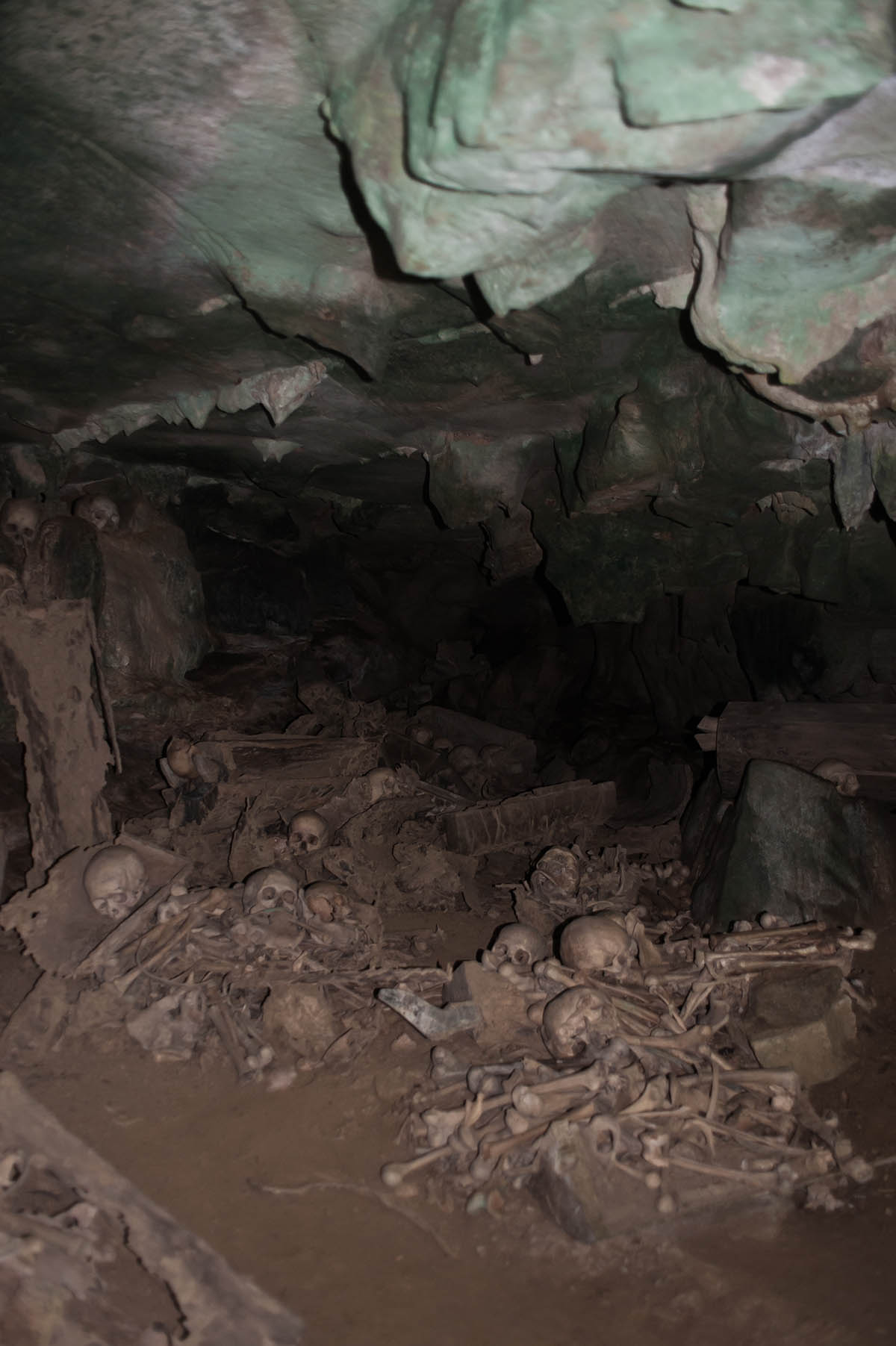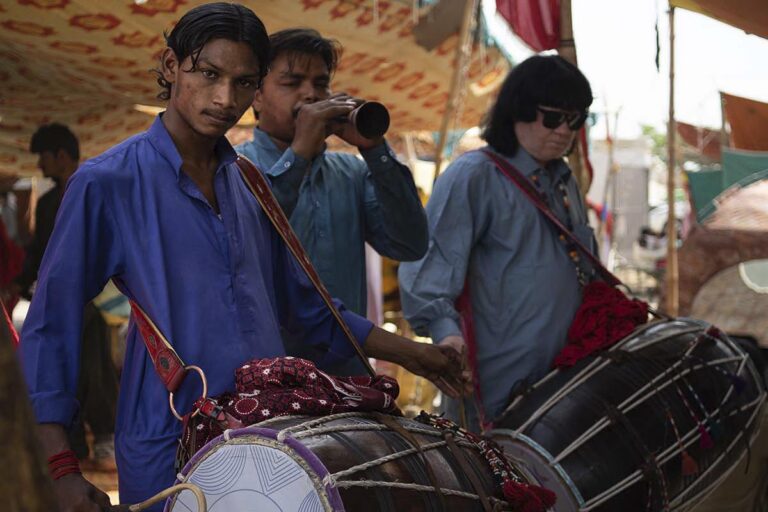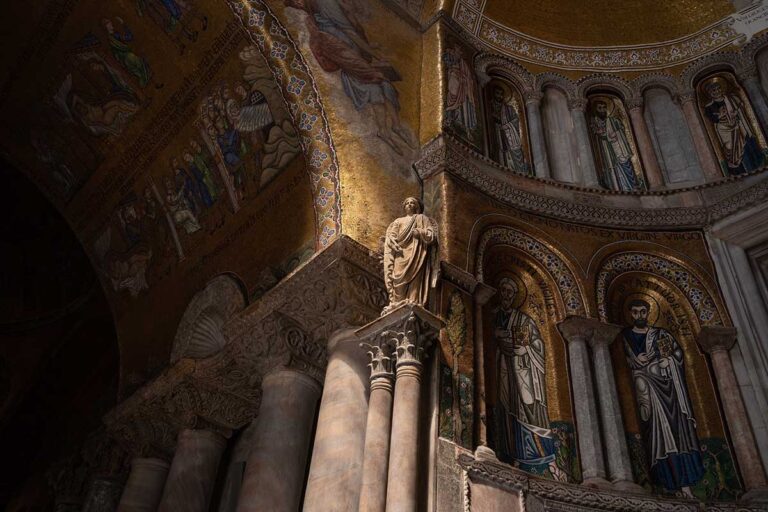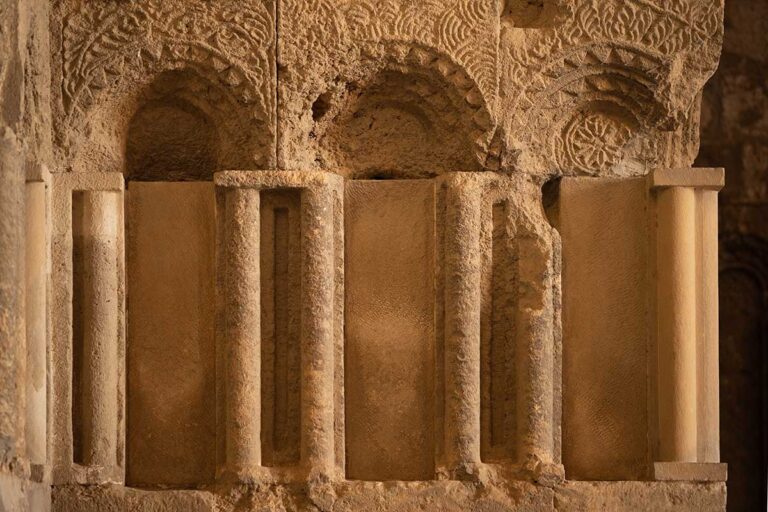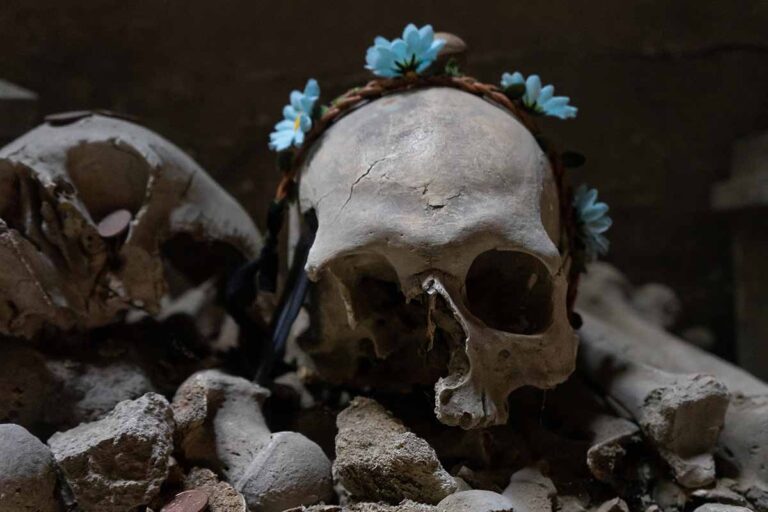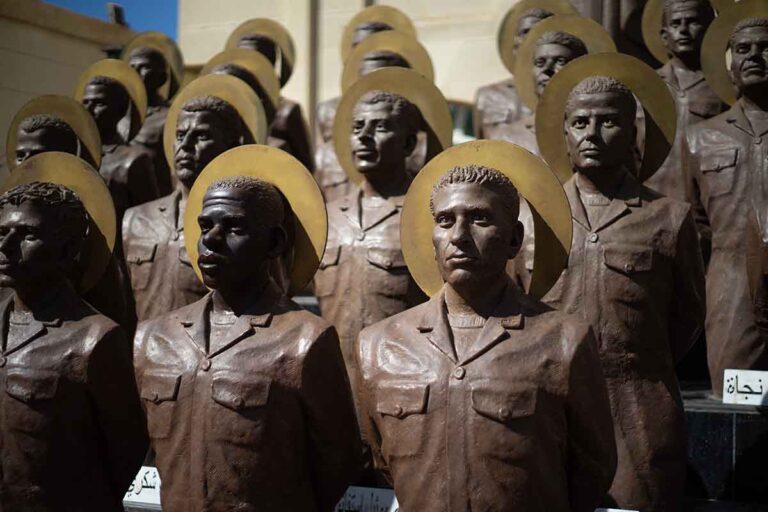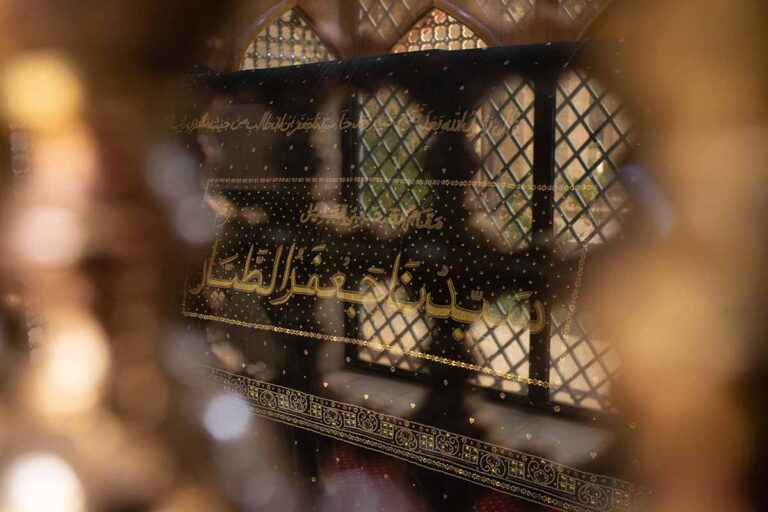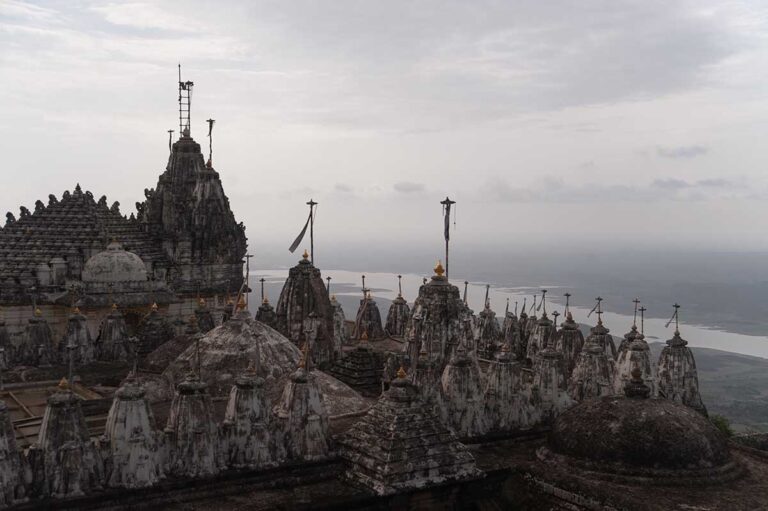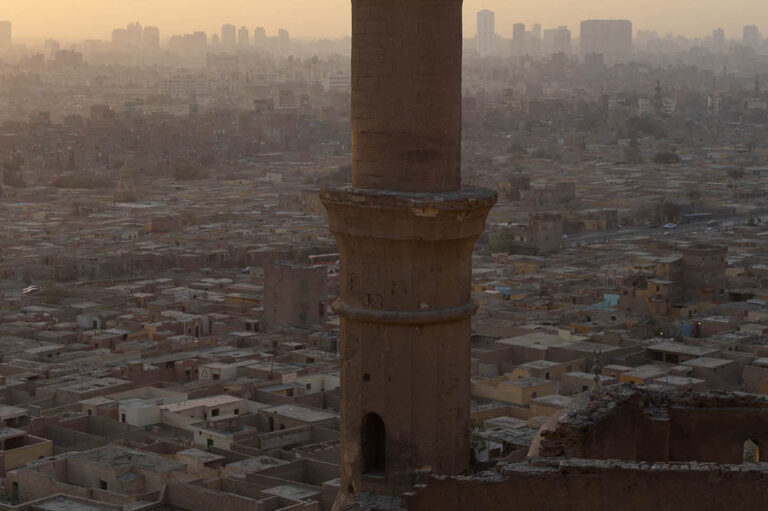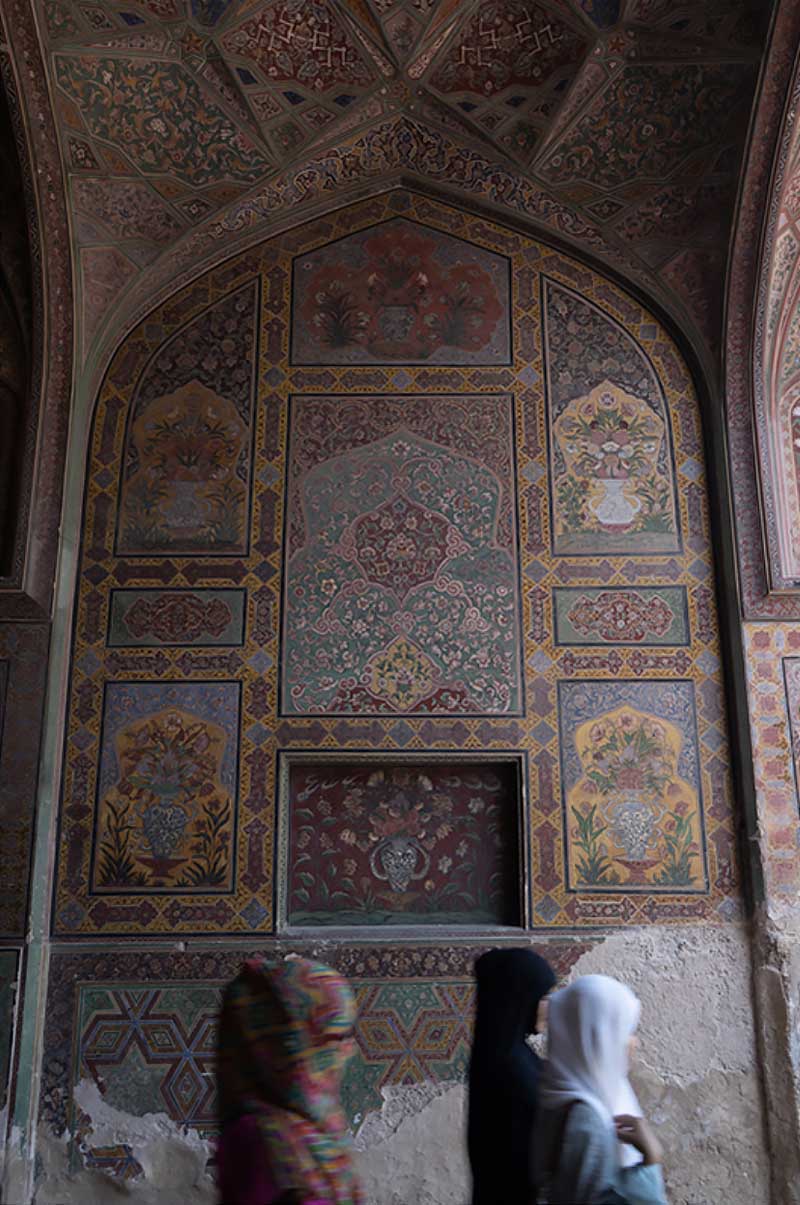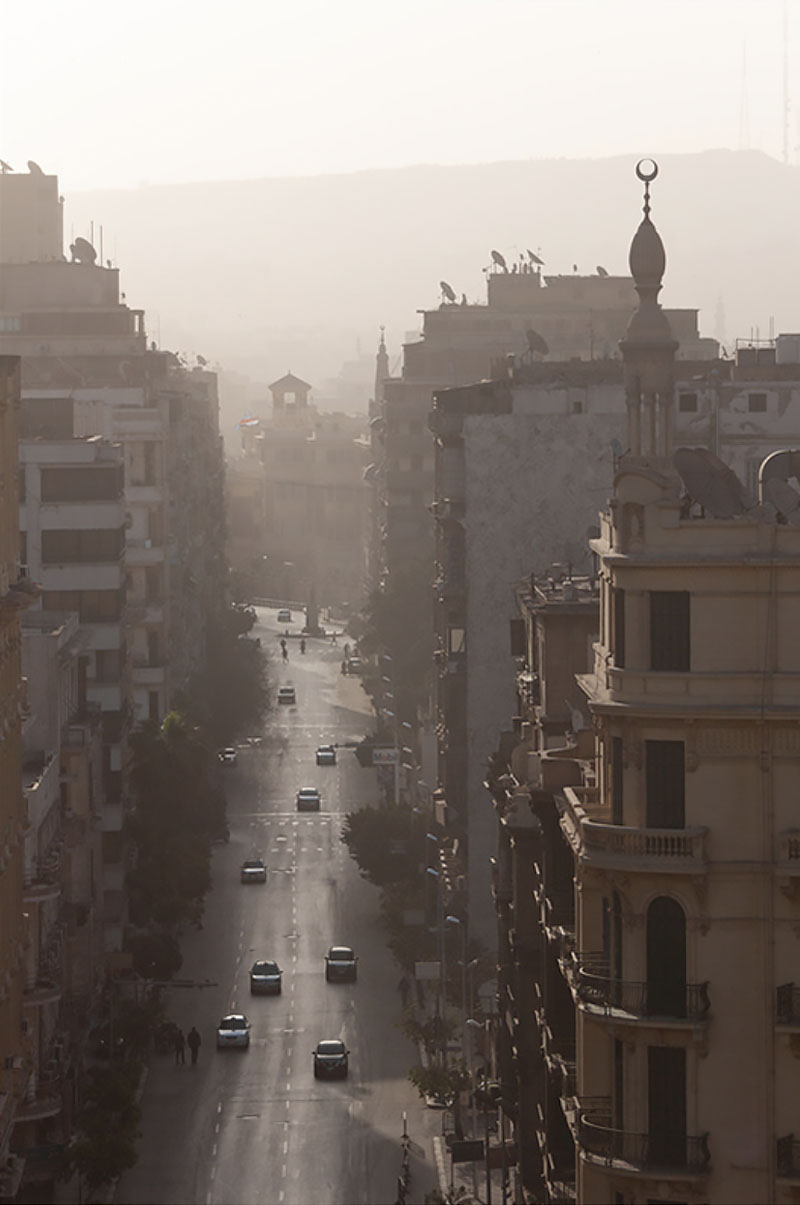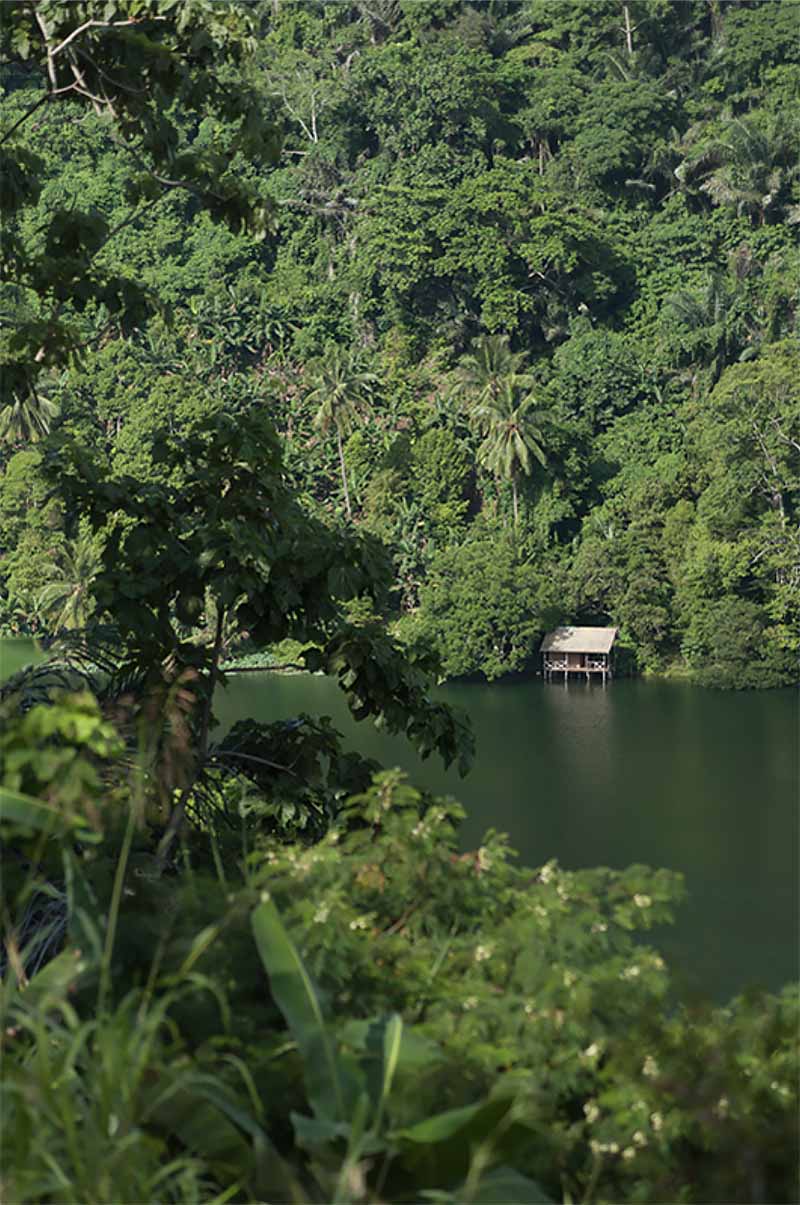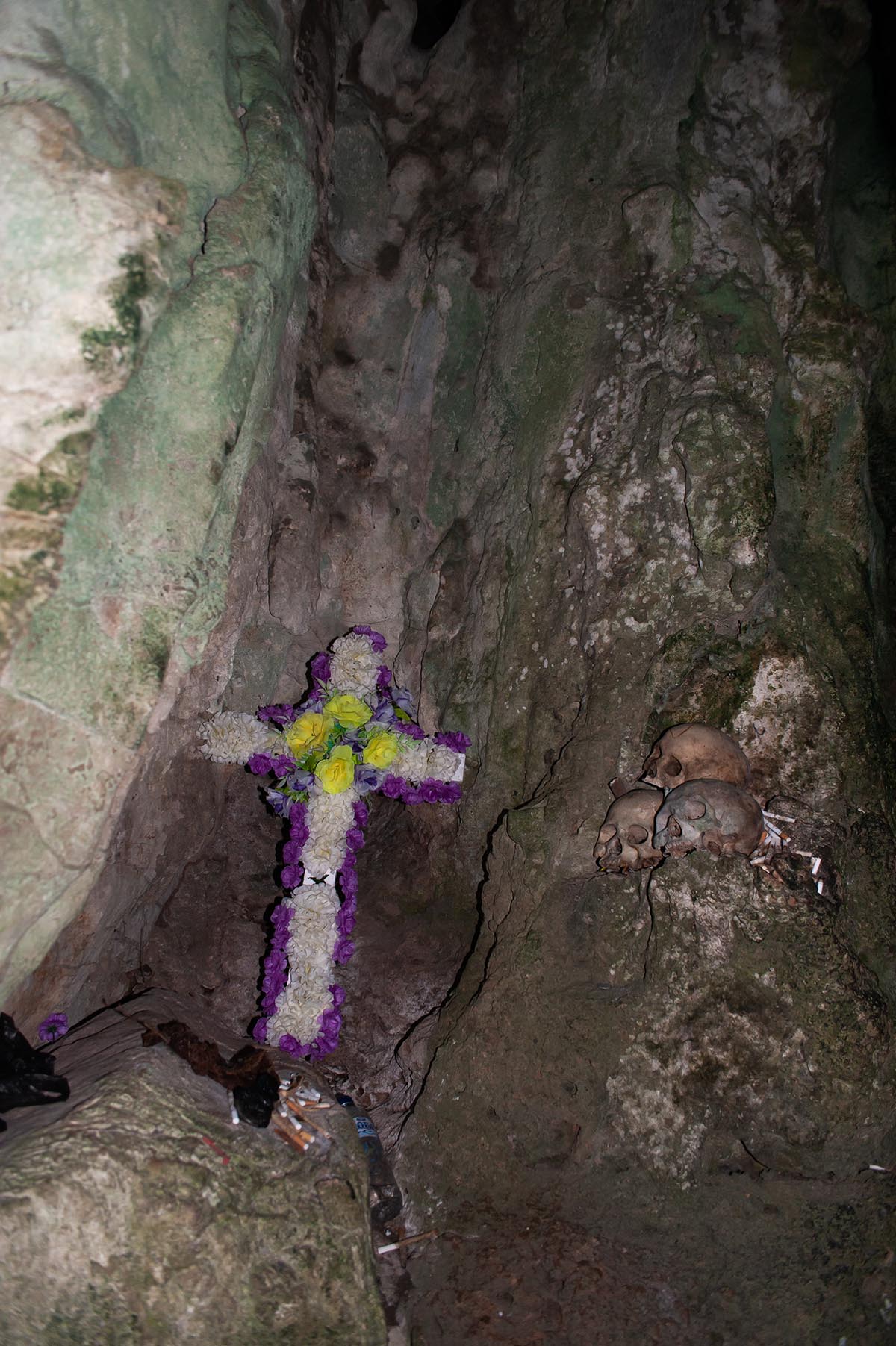
A shortened version of this story was published by Rough Guides in 2014.
The buffalo’s powerful torso shuddered as its throat was slit over the muddy grass. Fastened to a stake nearby, its leash went slack as its legs gave way and it slumped to the grass with a thud. With its final breaths, it raised its head up high into the air, the gash across its neck now gushing. At last, the bull lowered its head to the ground, falling still. It was somewhere around at this point that the old animists of Tana Toraja—a rugged stretch of jungle in the uplands of south Sulawesi—believed the deceased had at last set out on their journey into the next world.
In the lush, limestone highlands of Toraja (the thigh of the left leg of the island’s snaking ‘K’), the ‘Way of the Ancestors’ (Aluk To Dolo) reigned completely until a century ago, when Christian missionaries arrived. Though a majority is nominally Christian today, a fascinating set of the much older, animist traditions live on, most notably in funerals, with animal sacrifice at their heart. However unfortunately timed for the festivity’s honoree, the Torajan funeral remains the most expensive and elaborate of occasions in any Torajan’s life. In season (roughly June–September), there’s generally a funeral every day; you just have to know where.
In exchange for a carton of kreteks (clove cigarettes), I and my wife Joanna were welcomed at one—today in the tiny village of La’bo, a short hop from Rantepao, the regional hub. The motorbike ride was as gorgeous as any in Toraja, bounded as it is by cliffs and smothered with foliage, the odd farmer at work in the paddies, whole herds of buffaloes buried off the quiet roads in pools of mud, their slick backs glistening.
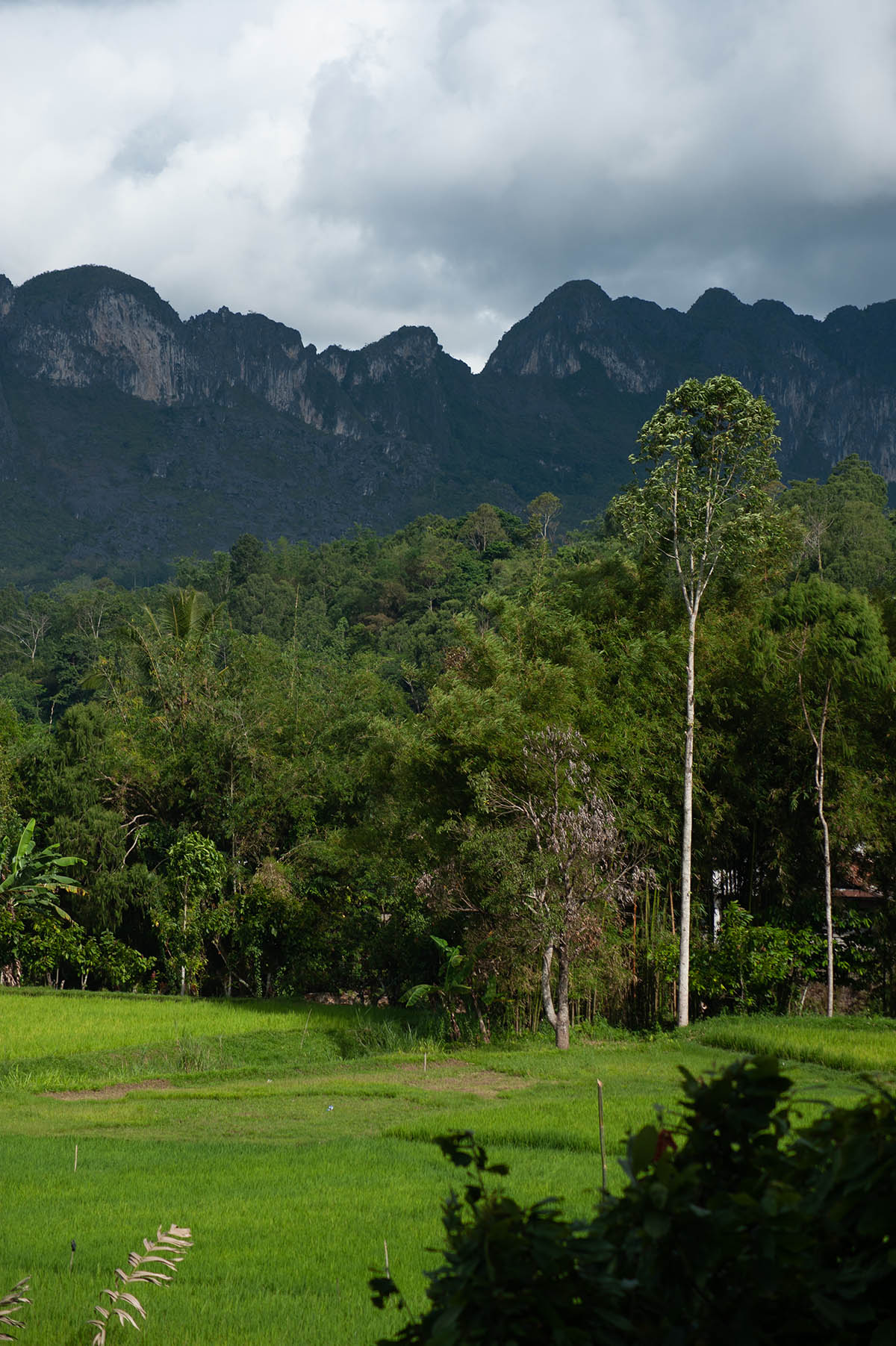
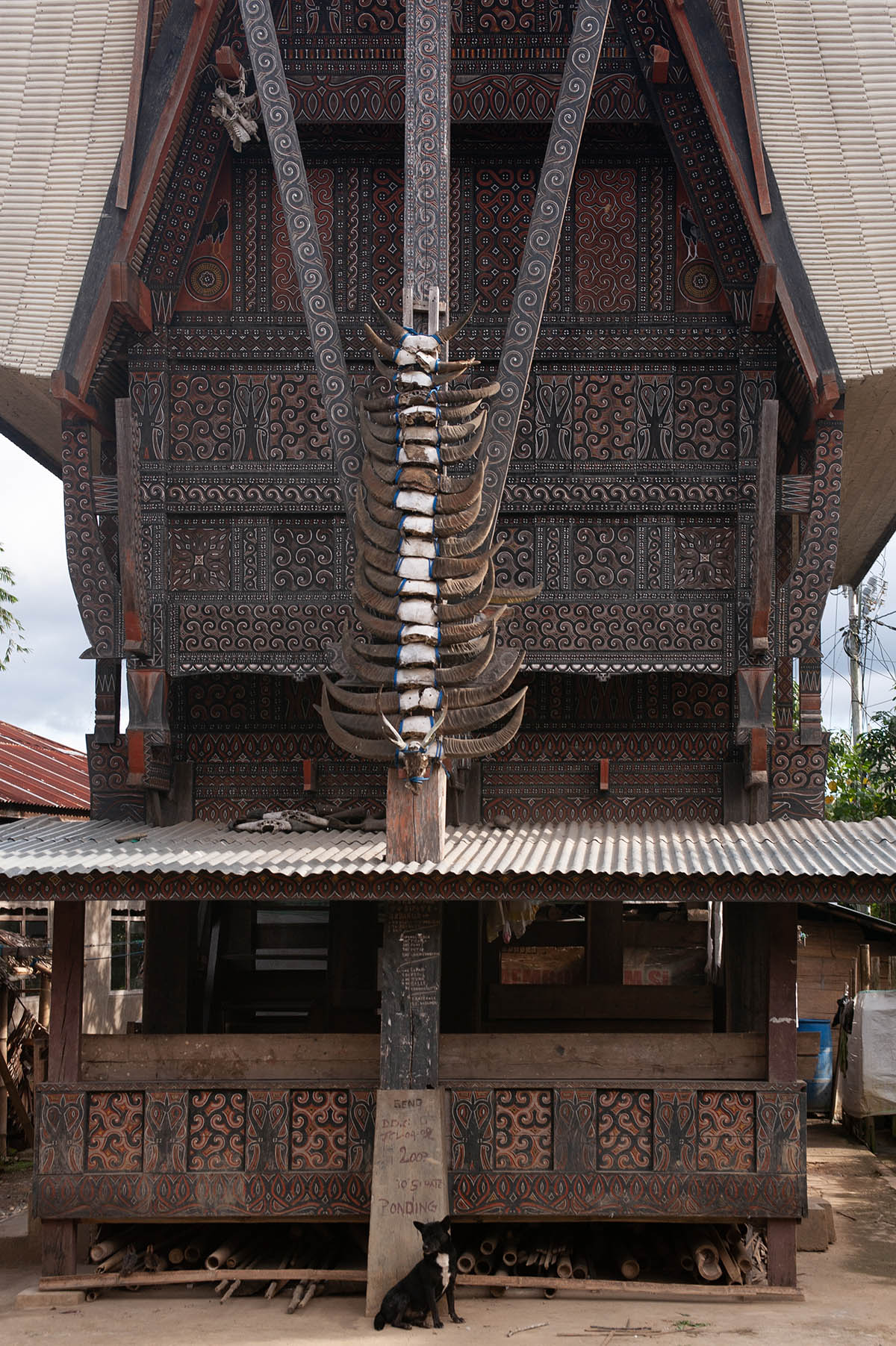
The village was abuzz when we arrived, the roadside crammed with vehicles as hundreds of well-dressed guests crowded the lawn, among them a couple of huddles of generally less presentable foreigners, everyone shuffling toward a circle of towering tongkonan, traditional, ancestral homes). Each of these was stacked with horns and intricately carved with curved, sweeping roofs of split bamboo.
I asked for the head of the household and was directed to a tiny old woman in black. When our turn came around to approach her, it felt pretty odd to deliver, in two outstretched hands, our funeral gift (a carton of smokes), but she smiled in warm and graceful acceptance, offering a tiny handshake and ushering us toward one of the huts that looked onto the field where the casket lay, waiting in the open patch of green at the foot of the tallest tongkonan. The funeral would soon start.
To reach our designated seats, we stepped around a dozen or so squealing pigs laid out in the grass, all tightly lashed to bamboo poles to await their deaths. The more buffaloes and pigs for the feast, the greater the honor to the deceased and, importantly here, to their families. Some families—like the one here in La’bo—save up for many months to ensure that the day is done right, others waiting multiple years post-mortem.
Inside, the women ate sweets while the men chain-smoked kreteks and sipped palm wine over gender-segregated chatter—until the first wave of food arrived before us. Nobody warned us it was one of many.
We stepped outside to a sudden commotion: the ritual rattling of the coffin. A dozen strong men hoisted up the giant, wood-carved casket to parade it in a wandering circle on the grass, shaking it about to great cheers, forcefully enough to send any lingering spirit on its way. The procession that trailed the men was all women, led by the tiny widow herself. In turn, she was trailed by a handful of similarly black-clad, elderly peers under a long strip of red cloth, all of them tied to the coffin. Somewhere along the way the widow lost her red tail, advancing in the grass all alone. All eyes were on her at the moment she sensed it. She stopped abruptly to turn, the cloth falling over her head in a messy heap. She struggled beneath it for what seemed a long moment until at last her face reappeared. I expected a gasp but she met with pure laughter, smiling and shaking her head to await her entourage.
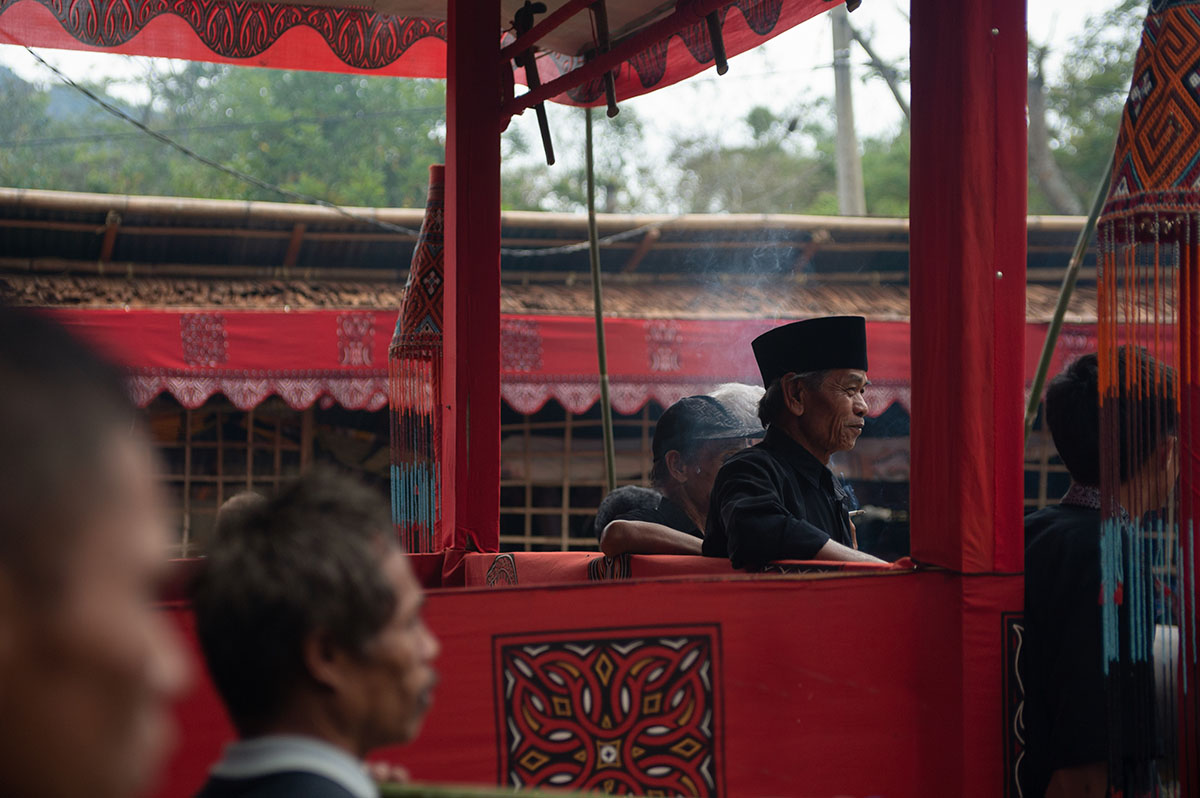
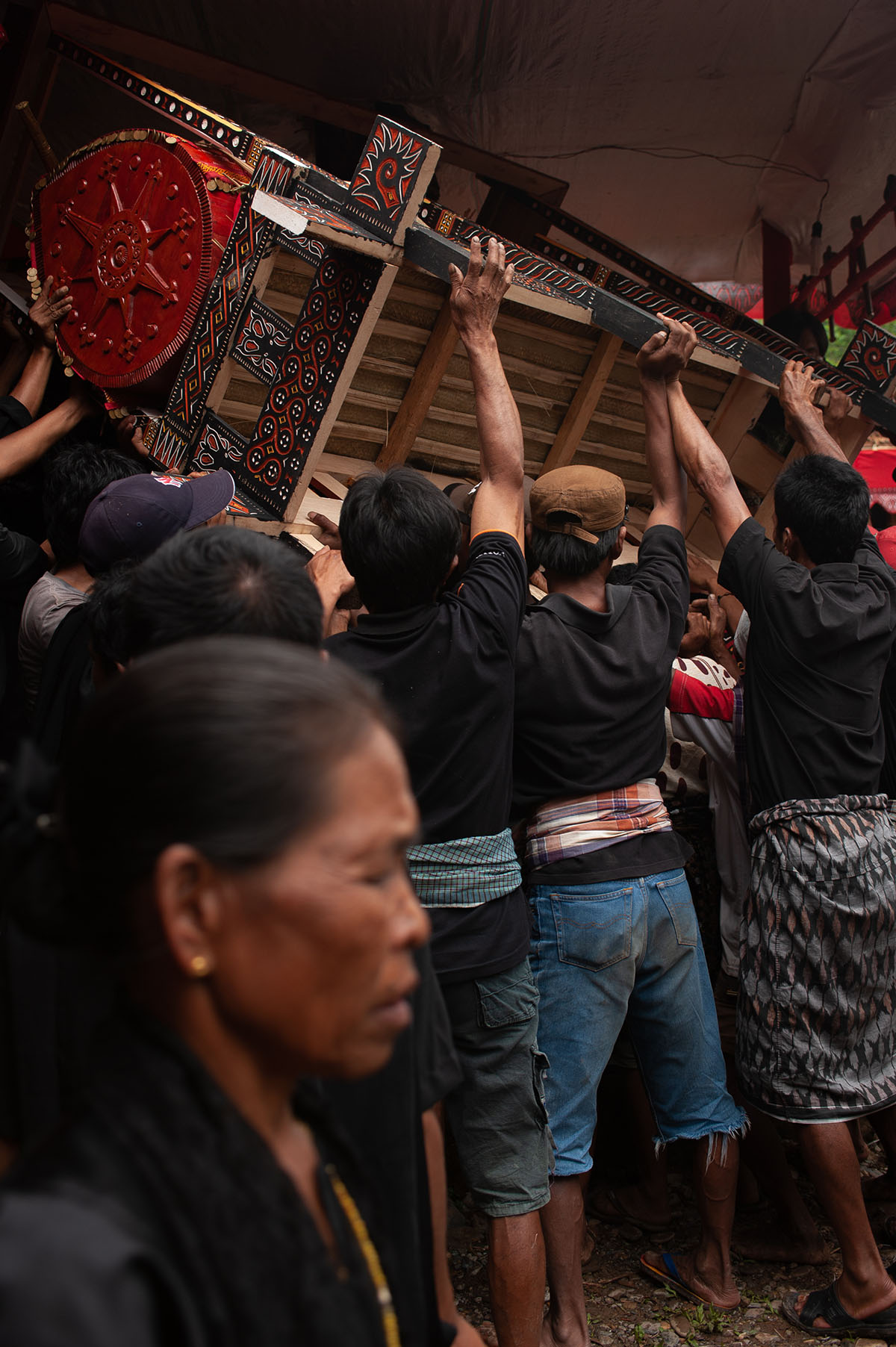
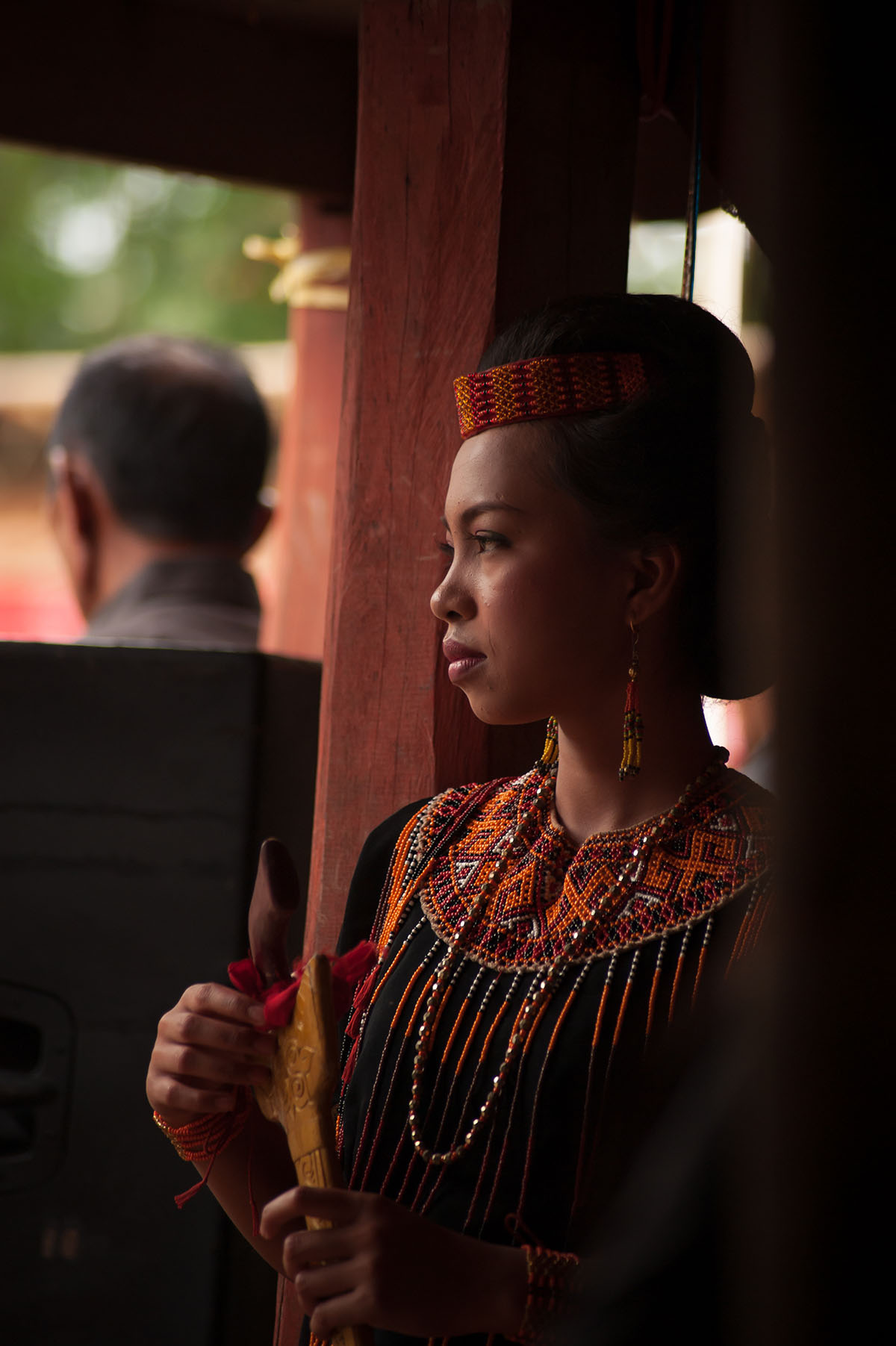
Brief eulogies followed, followed by more food. And finally, a buffalo was pulled into the now muddy patch of grass.
Another joyous cheer went up when the bull’s face slumped to the ground, never to rise. Up to fifty are slaughtered on occasion, an animal escort for the departed to the land of souls. On this day, we were relieved that just one single bull would be joining our man for the trip.
Awaiting the same fate, a half dozen pigs seemed to shriek a bit louder as we exchanged our round of goodbyes in the smoky hut, headed out the back way so as not to disturb any further. To Joanna’s dismay, however, our path took us right past the screaming, paralyzed pigs, still lashed to their bamboo poles but now in various stages of butchery. The feast was far from over.
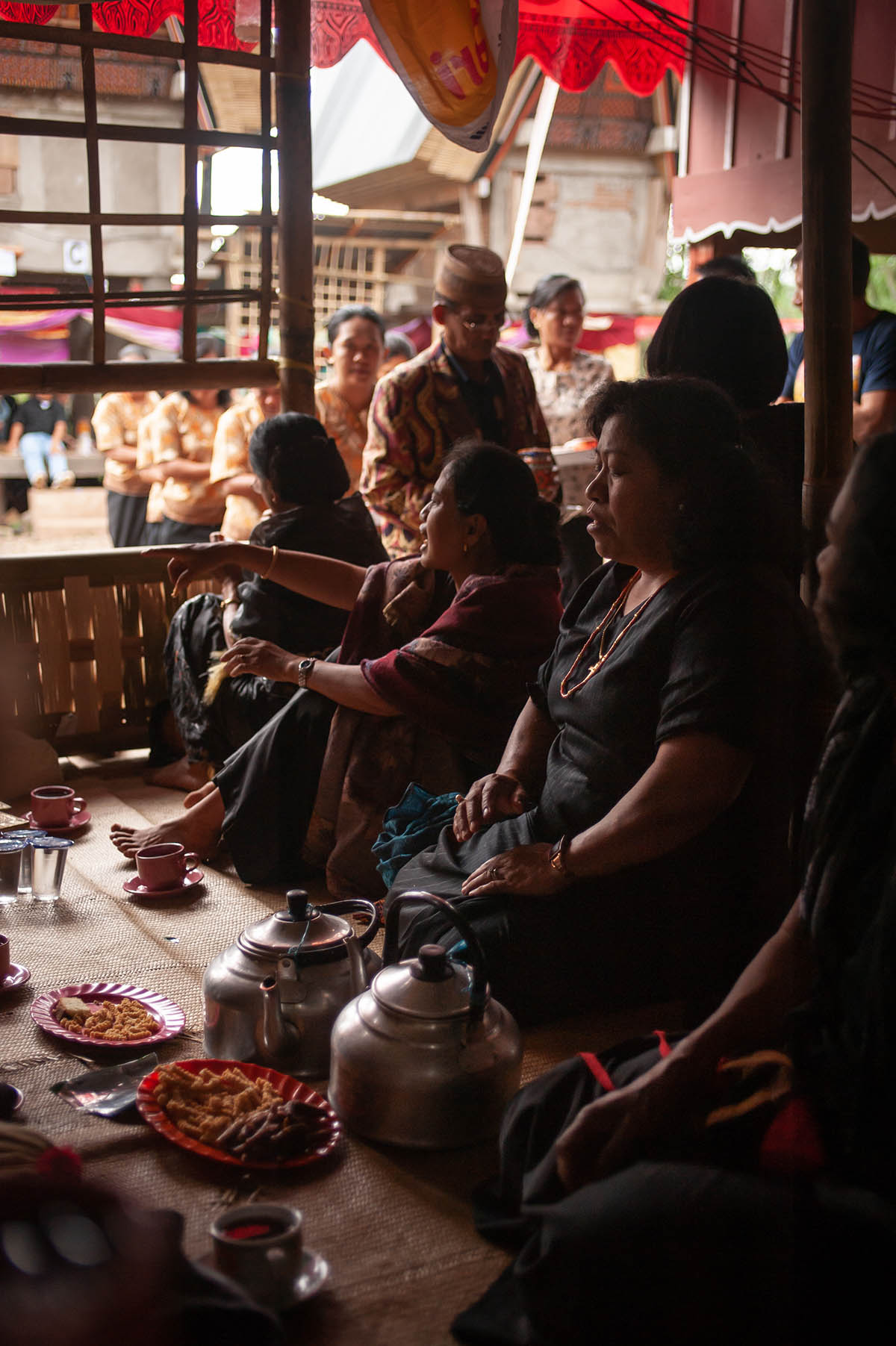
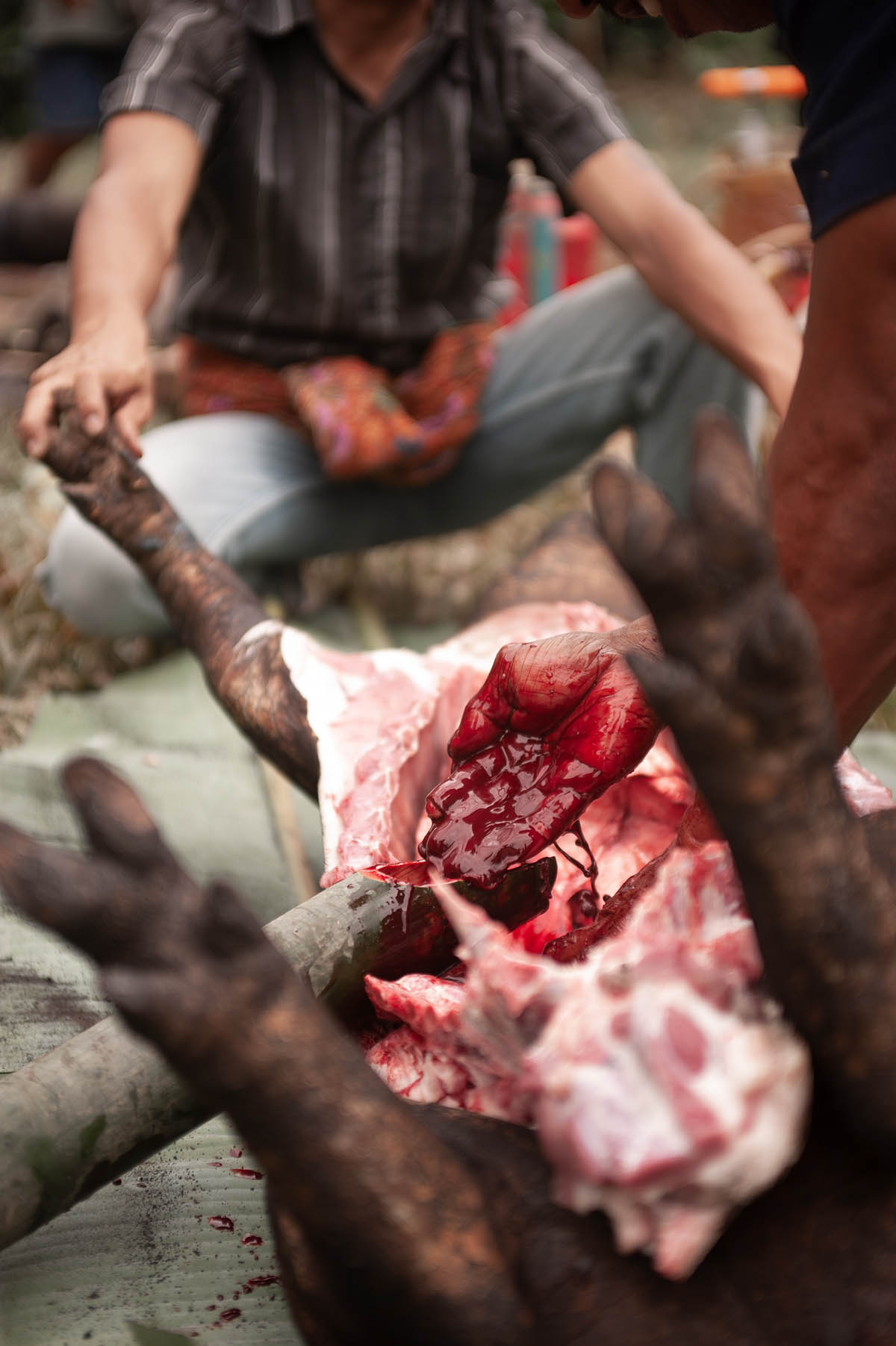
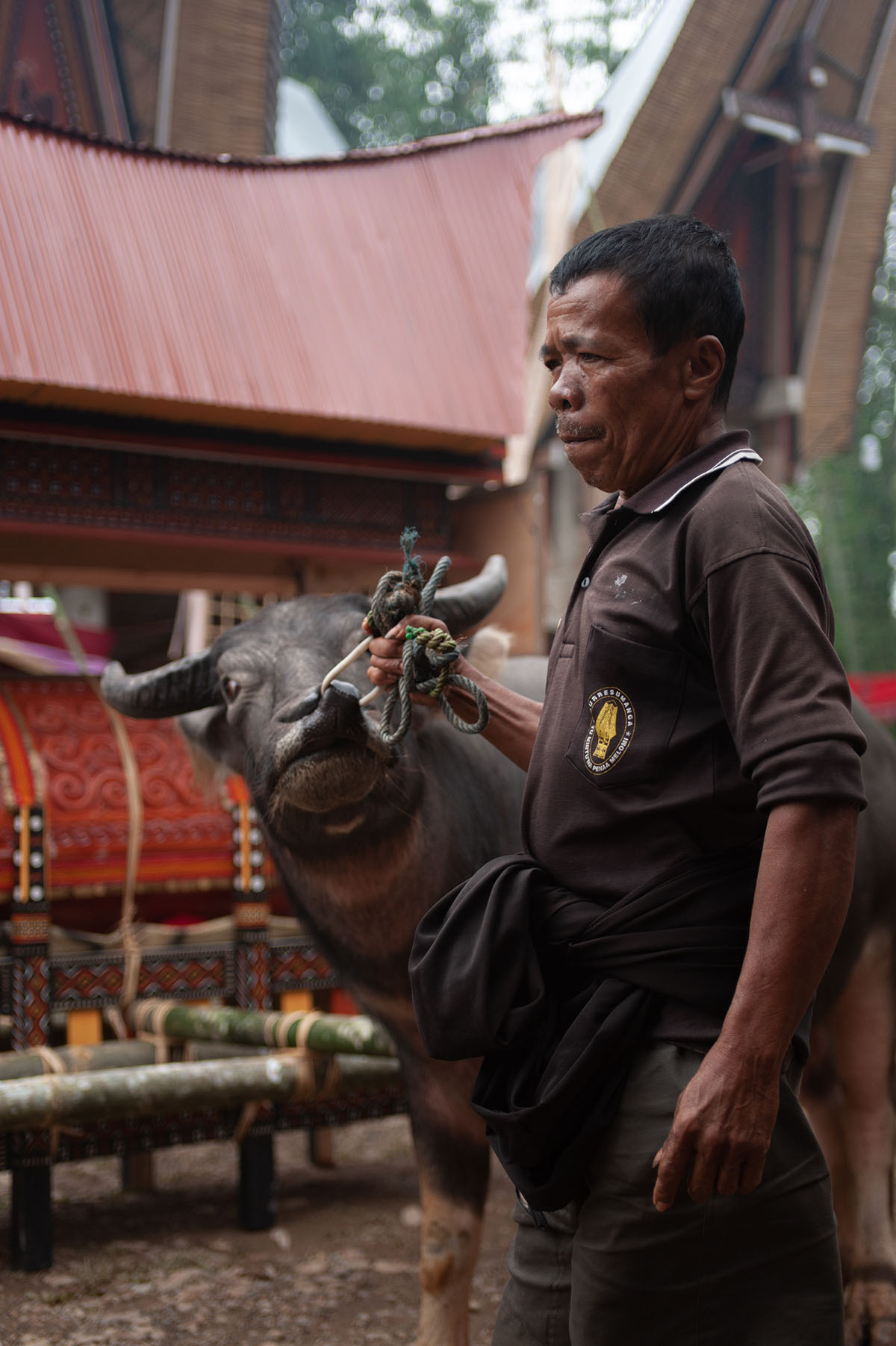
After the Funeral
The final resting place for the deceased would be in one of the caves that dotted the surrounding limestone hills. Some Torajans are buried in stone graves, others high on the cliffs in hanging coffins, the latter taking years to rot then break into pieces on the rocks below.
Before leaving Rantepao, we rode through the paddies to a couple of cliff sites to see for ourselved the caves and bones, finding, just as described, piles of skulls in the shadows at the mouths of deep caves. Around them was strewn the wreckage of coffins fallen long ago.
A few meters up the cliff face near Londa’s site stand several rows of colorfully dressed tau tau (effigies of the deceased), all peering down from a balcony of sorts in a crevice carved from the rock. Returning down the jungle trail to our bike, I could feel their blank gaze on my back.
